Dry Tortugas Bird Watching
People flock to the Dry Tortugas island chain for the absolute best snorkeling in Florida. But what many are not aware of is that the Dry Tortugasbird watching you can do out in the Dry Tortugas is equally amazing. No tours have yet to advertise the fascinating bird watching that can be done out here, but bird and nature enthusiasts from all over the world know the unique bird-watching environment that is found in the Dry Tortugas.
If you are planning a trip out to the Dry Tortugas out from Key West on a Seaplane Charter , you should definitely try to acquaint yourself with the types of birds on the islands and their unique behavior. Not only are these birds great to look at as they all look strikingly different, but their behavior in itself is something to marvel at. Between the months of February and September, for instance, you will see thousands of sooty terns who migrate to Bush Key to nest. Bush Key is entirely closed to visitors during these months to protect the fragile birds. Each sooty tern couple only has one offspring during this time period. While they are nesting over on Bush Key and Bush Key is off-limits to visitors, you will be able to see the sooty terns by using binoculars.
Some of the most common birds you will find on the Dry Tortugas include the hummingbird, the peregrine falcon, the yellow-billed cuckoo and the vireo. If you look up above, you are likely to see the large frigate with its seven-foot wingspan. There have been over 300 different bird species that have been seen in the Dry Tortugas and it is pretty common to be able to see up to 70 in one specific trip. The absolute best time to come the best bird watching is during the spring time, though year-round you are sure to see an impressive variety and number of birds.
Bird Watching Checklist Check out the Checklist for Bird Watching at the Dry Tortugas


Dry Tortugas Bird Watching in December
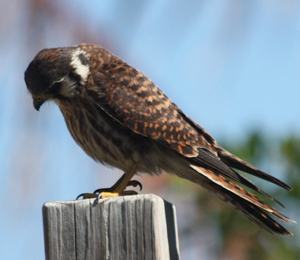
American Kestrel Hangs Out Around the Camp Grounds
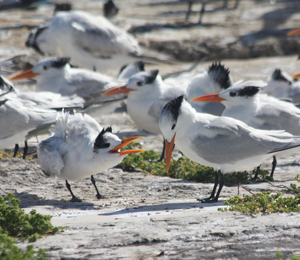
Royal Turns Visit The Dry Tortugas in December
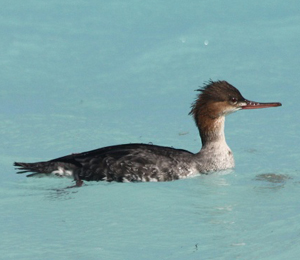
Birds That Visit Fort Jefferson in December
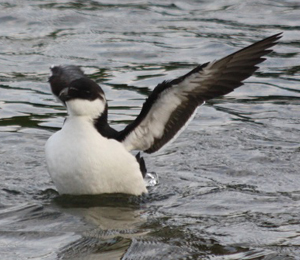
Perfect Bird Watching Weather in December
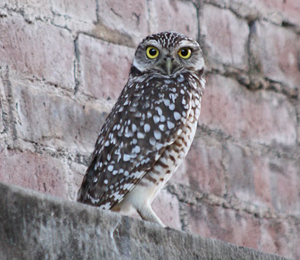
Owl Spotted at Fort Jefferson
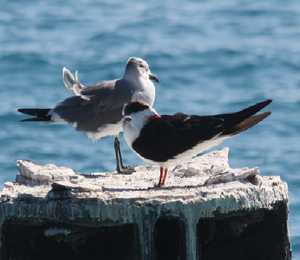
The Black Skimmer Arrives to the Dry Tortugas
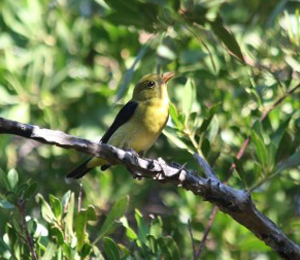
Scarlet Tanager Seen at Fort Jefferson
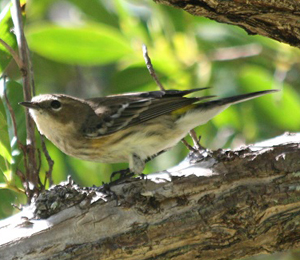
Song Birds Seen in November
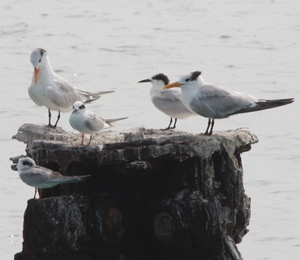
Different Turn Species in October
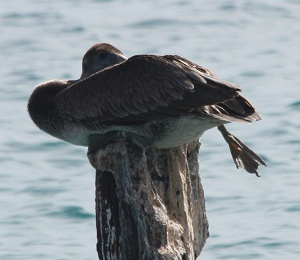
Birds Migrate In October
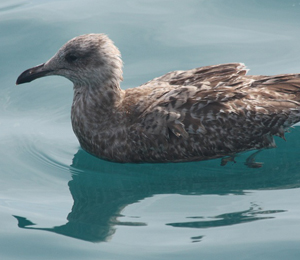
Start of Winter Migration
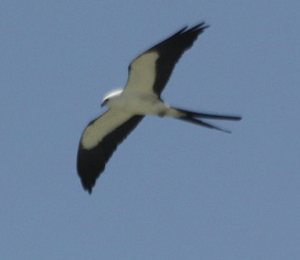
Swallow-Tailed Kite visits Fort Jefferson
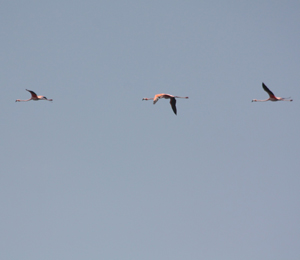
American Flamingos Visit the Dry Tortugas
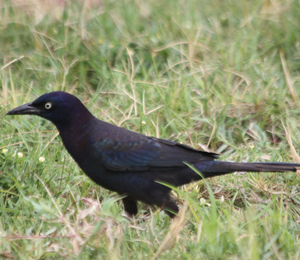
Migrates arrive in the Dry Tortugas
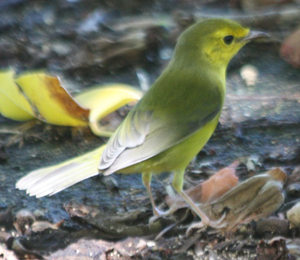
Birds of The Dry Tortugas
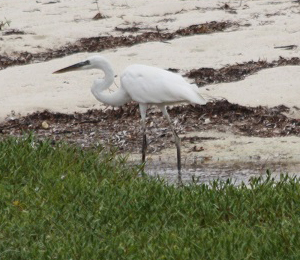
Great White heron at Fort Jefferson
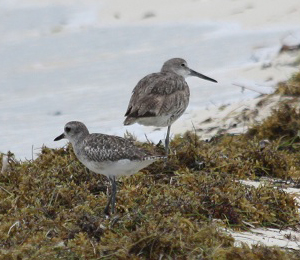
Birds Found Eating on The Shore in the Dry Tortugas
- ← Older
Make reservations for a Dry Tortugas Tour by booking online or contact us at (866) 575-5068.
Click Below For Reservations
- UNITED STATES (866) 575-5068
Price Match Guarantee
Found a better price online? We'll Price Match It.
WE WON'T BE BEAT ON PRICE!
In fact, our prices are up to 56% Cheaper*
Dry Tortugas National Park is the #1 Dry Tortugas Concierge in Key West
To prove it we are matching all online pricing on the tours we offer.
For price matching call
(866) 575-5068
*Current prices are 30% cheaper than cruise lines!
- Skip to global NPS navigation
- Skip to this park navigation
- Skip to the main content
- Skip to this park information section
- Skip to the footer section

Exiting nps.gov
Alerts in effect, guided tours.
Last updated: March 15, 2019
Park footer
Contact info, mailing address:.
40001 SR-9336 Homestead, FL 33034
305 242-7700
Stay Connected
Birding Bucket List: Check Off Rarities and Migrants at Dry Tortugas National Park
What: Breeding tropical seabirds, neotropical migrants, and the possibility of rare strays . The Dry Tortugas provide the only regular nesting site for Sooty Terns, Masked Boobies, Brown Noddies, and Magnificent Frigatebirds in the continental U.S.
Where: The seven coral islands that make up Florida’s Dry Tortugas National Park, 70 miles west of Key West.
When: Spring migration: early April to mid-May; fall migration: July to November.
Throughout their history, the Dry Tortugas have been home to everything from Spanish colonists and shipwrecks to Civil War prisoners and yellow fever. Their most enduring legacy, however, lies in the sheer amount of biodiversity that is packed into the little island chain.
Dry Tortugas National Park encompasses 100 square miles of mostly open water, save for seven small coral keys that have been known to host well over 200 bird species , the vast majority of which are migrants or strays. In spring, migrating neotropical seabirds begin arriving from Mexico, Central, and South America as early as January, with migration climaxing in droves of northbound songbirds from April to mid-May. Fall migration, which lasts from early July to late November is more subdued but still a spectacle in its own righ t , bringing a variety of raptors, including Peregrine Falcons, Merlins, and Sharp-shinned and Broad-shouldered Hawks heading south.
For birders, spring migration is the main attraction in the Tortugas, offering an alluring mix of breeding rarities and exhausted migrants after traveling nonstop over the Gulf of Mexico. During peak migration, this can lead to visitors seeing a mind-boggling variety of birds, including prized species like Hooded Warblers, Yellow-throated Vireos, and Summer Tanagers. Severe storms in early spring can lead to even larger and diverse flocks of migratory fallouts. “They drop out any time they find a brief respite,” says Julie Wraithmell, the executive director for Audubon Florida . “And the Dry Tortugas have a giant rest stop sign on it.” In addition to these migrants, Caribbean specialties are also on the menu, including the White-tailed Tropicbird, Antillean Nighthawk, and Black Noddy—possibly the top target species for birders visiting the Tortugas.

Of the seven keys, only Garden and Loggerhead Keys are regularly accessible to the public, but the former has one of the best birdwatching sites in the country: Fort Jefferson, an American military base dating back to the mid-1800s. Once a formidable military presence in the Straits of Florida, the site now houses the sole source of freshwater for migrating birds via a fountain maintained by the National Park Service (NPS). Hoping to find Golden-winged Warblers, Black-whiskered Vireos, and Rose-breasted Grosbeaks all in one spot? Just grab a seat on one of the benches surrounding the fountain, according to Mark Hedden, the executive director for the Florida Keys Audubon Society. Tired and parched, most birds vying for a spot are unconcerned with human onlookers. “They will come in and just hit that fountain over and over again,” Hedden says.
Visitors able to climb the three stories to the top of the fort will be rewarded with another treat: Close glimpses of the Magnificent Frigatebirds that hover above the island. Home to about 100 nesting pairs , nearby Long Key is the only breeding colony of the angular seabird in the United States. Sporting an impressive, inflatable throat sac and a 7-foot wingspan, Magnificent Frigatebirds are among the largest and flashiest birds the Dry Tortugas has to offer. “You can probably get as close as you'll ever get to a Magnificent Frigatebird if you sit up on top of the fort,” Hedden says. “I've lived in the Florida Keys for 30 years, and I still stop every time I see a frigatebird. They're just such amazing things to look at.”

Along with those soaring frigatebirds, birders can rely on seeing some of the Tortugas’ other residents wheeling about in the sky. Roughly 80,000 Sooty Terns and more than 4,000 Brown Noddies (and the occasional Black Noddy) return each year to breed and nest on Bush Key, the only regular nesting site for both species in the continental U.S. The Sooty Terns begin making landfall in January, but they can be heard approaching the island on late December nights thanks to their cacophonous calls, says Glenn Simpson, park manager for Dry Tortugas National Park. Once the breeding season ramps up in March, Sooty Terns dominate Bush Key until August. The Brown Noddies, which usually arrive with the Sooties, continue to occupy the key until October. The NPS closes Bush Key to the public from February to September to accommodate the nesting birds, but not to fret: Equipped with a good scope, you can park yourself atop Fort Jefferson and spy on their raucous colonies, which can be heard day and night. “It’s a great thing—the Sooty Terns and the Noddy terns, they make a lot of noise.” Simpson says. “It's just a part of life at the Dry Tortugas, and you get used to it.”
The Dry Tortugas have been noted for their rich biodiversity since Juan Ponce de Le ón first documented them in 1513, with the likes of John James Audubon and geologist Louis Agassiz conducting surveys of the keys in the 1800s. The Dry Tortugas that Audubon and Agassiz witnessed weren’t the same collection of islands visitors visit today, though. In 1832, Audubon described the famous Sooties and Noddies of Dry Tortugas nesting on an island called “Bird Key.” A century later, Bird Key washed away , forcing the terns to seek refuge on other islands. Since the keys are mostly sandy deposits, they’re regularly reshaped by erosion and severe weather. According to Simpson, aerial images show that Loggerhead Key has been steadily shifting southeast over the past decade. “The northwestern shoreline is eroding significantly each year, and it's building on the opposite shoreline,” he says. “So the island is in motion.”

Know Before You Go: Visitors can only access the Dry Tortugas by private boat, commercial seaplane, or aboard the Yankee Freedom , a 175-passenger commercial ferry that departs daily from Key West. Those opting to arrive by seaplane or ferry should reserve early, since spots can sell out months in advance. With the ferry and seaplane only bringing visitors to Garden Key , arranging a private boat can offer more access. According to Simpson, Hospital Key (named after a hospital for Fort Jefferson inmates built in the 1870s) and Loggerhead Key (home to a year-round population of 40 or so Masked Boobies) can be approached by boat or kayak. While Hospital Key is closed to the public, Loggerhead is open to visitors during daytime hours. But from the water, you can still get close enough to Hospital Key to take photos of the boobies, says Simpson.
While all birders should pack binoculars and, ideally, a scope for birding at Dry Tortugas, those aboard the Yankee Freedom or private boats also have a chance to see a wider assortment of pelagic seabirds on their way to the park. The sun can be brutal on the open water, though, so don't forget your hat and sunscreen. Simpson advises visitors to wear reef-safe sunscreen to help out the park’s corals, which have suffered from an infectious disease known as Stony Coral Tissue Loss Disease.
Guests can also choose between taking a day trip or camping trips of up to 4 days. Parties of 10 campers or more will need to apply for a reservation through NPS. Smaller groups are able to claim a campsite on a first come, first served basis and can pay for camping fees after arriving on Garden Key. For Wraithmell, camping gives visitors a chance to explore other opportunities the Dry Tortugas offer outside of birding. “You'd be remiss if you didn't enjoy the dark sky while you're camping there,” Wraithmell says, “ and experiencing the Milky Way away from the lights of the city.”

Pledge to stand with Audubon to call on elected officials to listen to science and work towards climate solutions.

Archaeopteryx Birding and Nature Tours
Professional Bird, Butterfly, Nature, and Photography Tours Around Central Florida and the World – Creating Lifetime Memories One Tour at a Time

Florida Keys & Dry Tortugas
Guided tours of the florida keys, everglades, and miami are available year round contact us for rate details..

Spring Migration South Florida and Dry Tortugas Birding and Photography Tour
$600.00 single supplement.
Join us this April for a birding tour exploring the Dry Tortugas and Everglades National Parks, the keys, and we’ll even be doing some urban birding in the Miami area as well as moving a little further north for a chance to see some of our resident birds, like the Florida Scrub-Jay and Bachman’s Sparrow. The Florida keys and the Dry Tortugas can be excellent migratory destinations for birds coming back from the Caribbean and Central America. When the conditions are ideal, there can even be a chance of seeing fallout in these areas. Here is a breakdown of our tour itinerary.
4/19- Arrive at the Fort Lauderdale airport no later than 1pm. We’ll begin our adventure by taking a short trip to Long Key Natural Area to observe Limpkin, Mottled Duck, and Purple Gallinule. Then we’ll visit the Vista View park for Burrowing Owl, Muscovy Duck, and Gray-headed Swamphen before driving south to Florida City.
4/20- Begin early and look for the Common Myna that makes its home in South Florida. We’ll bird down the keys beginning with a stop at the Dangy Johnson State Botanical Park and Carysfort Circle in order to find Black-whiskered Vireo, Mangrove Cuckoo (very difficult this time of year, but we can try for it), and Painted Bunting. Break for lunch at Ballyhoo’s (an award winning seafood restaurant with a secret vegan menu as well). Continue south through the keys and stop at the government building in Marathon to see if the Roseate and Least Terns that nest on the rooftop have returned yet. Then check for any Gull-billed Tern sightings or any vagrants that have been reported in the lower keys. Lastly, we’ll check Blue Hole National Wildlife Refuge for the iconic Key Deer, a subspecies of the White-tailed Deer that only grows to about 2 1/2 feet in height. Check into our hotel on the lower keys for the night.
4/21- Dry Tortugas Day! We’ll have to get up early and board the Yankee Freedom for our day trip to the island where we’re going to see plenty of migratory species on their way to the mainland for the spring breeding season. We’ll see several species of warbler, hummingbirds, and falcons, not to mention Masked and Brown Booby, Magnificent Frigatebird, Brown Noddy, Sooty, Royal, and Sandwich Tern. There’s also possibility for Black Noddy, Bridled Tern, and Antillean Nighthawk.
4/22- Begin the day at Fort Zachary Taylor State Park for the Great White Heron, Short-tailed Hawk, and even possibility for something rare such as the Fork-tailed Flycatcher. Then lunch at the Hogfish Grill before going back to our hotel. We’ll make our way up the keys and return to Florida City/Homestead for the night.
4/23- Begin birding very early in the morning before sunrise. We’ll take the road down to the Flamingo entrance of the Everglades. There are usually several Barn Owls perched in the trees on the sides of the road before sunrise. This section of the Everglades is home to manatees, American Crocodile, and Wood Storks. Shiny Cowbirds have recently begun nesting in the area and there is possibility for Marbled Godwit as well. On our drive back to Homestead/Florida City, we’ll stop at Lucky Hammock WMA. This area is infamous for rare bird sightings and Scissor-tailed Flycatchers have been seen here in the past. This is also a great stop for White-tailed or Swallow-tailed Kites. Dinner at Mario’s Cuban Cafe in Homestead and check into our new hotel in South Miami.
4/24- A trip to Cutler Wetlands first thing in the morning to try our luck in hearing or seeing a King Rail. We’ll do a loop around Miami metro area and Kendall to pick up some species we won’t be able to see anywhere else including Red-whiskered Bulbul, Scaly-breasted Munia, Muscovy Duck, Egyptian Goose, Spot-breasted Oriole, Cave Swallow, Loggerhead Shrike, and Mitred, Scarlet-fronted, Crimson-fronted, Yellow-chevroned, and Red-masked Parakeets. Lunch at the Titanic Brewery. Then drive north to West Palm Beach for lodging.
4/25- Begin the day birding at the Jonathan Dickinson State Park for some exciting resident southeastern bird species. We’ll see the Red-cockaded Woodpecker, Bachman’s Sparrow, Brown-headed Nuthatch, Florida Scrub-Jay, Black-bellied Whistling-Duck, Common Nighthawk, Northern Flicker, and Eastern Meadowlark. Then we’ll break for lunch and make a trip out to the Sem-chi Rice Mill for Crested Caracara, Yellow-headed Blackbird, Stilt Sandpiper, and Fulvous-Whistling Duck. Back to our lodging in West Palm Beach.
4/26- Morning birding trip out to Loxahatchee NWR for Nanday Parakeets, Solitary Sandpiper, Least Bittern, and Florida subspecies of the Sandhill Crane. Flights home in the afternoon no earlier than 1pm.
The tour fee will be $2462 per person with a $600 singles supplement fee (and you’d get 5% off this price). Hotels, ferry tickets, and car rentals tend to book up quickly for April, so the sooner we can confirm everything the better.
Share this:

- Already have a WordPress.com account? Log in now.
- Subscribe Subscribed
- Copy shortlink
- Report this content
- View post in Reader
- Manage subscriptions
- Collapse this bar
- Excellent and often easy wildlife viewing, especially large waders
- Specialties of the pine woods of the southeast USA
- Exciting birding on the Keys and the Dry Tortugas
Tour Overview
Winter is a great time to visit south Florida, the subtropics of the United States. On our Florida birding tour, we experience a range of fascinating habitats from upland pine forests, prairies and cypress swamps to mangrove swamps, hardwood hammocks, and the sheltered waters of the Florida Keys. We take in the famous Ding Darling NWR for its waterbirds, Babcock-Webb WMA for the pine trio of Red-cockaded Woodpecker, Bachman’s Sparrow and Brown-headed Nuthatch, Everglades National Park for Mottled Duck, Limpkin, Wood Stork, Roseate Spoonbill, Snail Kite, Swallow-tailed Kite, Short-tailed Hawk, Purple Gallinule and others, and the Keys for southern Florida specialties such as Mangrove Cuckoo and White-crowned Pigeon.
We also take a day trip to the fabulous Dry Tortugas, to witness the onset of breeding by thousands of Sooty Terns, Brown Noddies and Magnificent Frigatebirds. We end our tour in the Miami area, where several exotic species have become naturalized – various parakeets and parrots, mynas, exotic waterbirds, Red-whiskered Bulbuls and Spot-breasted Orioles are resident here. We will also keep track of local sightings, in case a vagrant occurs close by.
Dates & Prices
Dates & prices.
We strongly encourage bookings before Dec. 15th to ensure a spot on the Dry Tortugas boat tour.
What's Included
Tour price includes.
- All accommodation (Good, comfortable)
- All breakfasts and lunches
- Ground transportation (15-passenger vans)
- One EET guide with 4 - 8 participants, 2 guides with 9 - 12 participants in 2 vehicles
- Full-day boat ride to Dry Tortugas
- All park, conservation and entrance fees
Tour Price Does Not Include
- Flights to and from start/ end location
- Evening meals
- Travel Insurance
- Items of a personal nature

Day 1: Arrival - Fort Myers
Our Florida birding tour begins with a meeting for dinner in the hotel lobby at 6:30 p.m. Night in Fort Myers.
Day 2: Ding Darling NWR and San Carlos Bay
Our first birding day is a big one, as we visit the world-renowned Ding Darling National Wildlife Refuge on Sanibel Island. Among the spectacular array of waders and shorebirds we will search for some local specialities, including Roseate Spoonbill, Wood Stork and Yellow-crowned Night-Heron. With some luck we may catch a glimpse of a resident Short-tailed Hawk or Bald Eagle flying overhead. We will also stop at San Carlos Bay/Bunche Beach Preserve to look for saltwater-loving species such as Black Skimmer and Reddish Egret. In the early evening we will look for resident Burrowing Owls and Monk Parakeets in Cape Coral. Night in Fort Myers.
Day 3: Babcock-Webb WMA
On day 3 we will drive north to Babcock-Webb Wildlife Management area, a large tract of slash pine and marsh, for three pinewoods specialties - Red-cockaded Woodpecker, Brown-headed Nuthatch and a chance for Bachman’s Sparrow. Other species here include Eastern Towhee, Brown Thrasher, Eastern Bluebird and Eastern Meadowlark. Sandhill Cranes nest in the area, and roadside wetlands support American Coot and Common Gallinule.
In the afternoon, we search for species we may have missed and look nearby for Florida Scrub-Jay, a threatened species found only in Florida. Nearby wetlands support Black-bellied Whistling-Duck and Glossy Ibis. Night in Fort Myers.
Day 4: Corkscrew Swamp and Miccosukee
In the morning we visit the famous Audubon Corkscrew Swamp Sanctuary. After checking the visitors center birdfeeders for Common Ground-Dove and Painted Bunting we will head out on the beautiful boardwalks in search of the swamp’s residents, including Limpkin. Many northern warblers spend their winter months here, and Tufted Titmice forage in the cypress.
In the afternoon we carry on across southern Florida towards Homestead, stopping in the Miccosukee area to search for the endangered Snail Kite foraging along the irrigation canals. Night in Homestead.
Day 5: Everglades
We spend the day in the Everglades, Marjory Stoneman Douglas’s “River of Grass”. We travel from Royal Palms to Flamingo, the terminus of Everglades National Park’s main road. We stop at well-known sites such as Anhinga Trail, where conspicuous residents include Purple Gallinule, and, appropriately, Anhinga, Mahogany Hammock with its diverse tropical hardwood trees and marvelous land snails, and Paurotis and Nine-mile Ponds for Mottled Duck, Wood Stork, Roseate Spoonbill and soaring Short-tailed Hawk.
The mudflats at Flamingo host shorebirds and terns, including Marbled Godwit, and Eco Pond occasionally has Glossy and White Ibis, and possibly Black-necked Stilt. We will also be on the watch for American Crocodile and West Indian Manatee. Our tally of birds could include many specialties of southern Florida - White-crowned Pigeon, Short-tailed and Swainson’s Hawks, Barred Owl, White-tailed Kite and even Scissor-tailed Flycatcher. Night in Homestead.
Day 6: Florida Keys
We begin the morning birding the Homestead area, this region of south florida is well known as being an excellent site for over-wintering birds, often with a decidedly western flair! After, we leave Homestead and head down to the keys. We stop first in Key Largo in search of specialties such as White-crowned Pigeon and Yellow-throated Warbler, and with luck scarcer species such as Mangrove Cuckoo or Shiny Cuckoo. Night in Key West.
Day 7: Dry Tortugas
We will take a day trip via boat to Dry Tortugas National Park to explore the birds & wildlife of the island. At this time of year we have a chance to see Sooty Tern, Masked Booby, Brown Noddy, and Magnificent Frigatebird nesting on these islands. There is also excellent snorkelling to be enjoyed here (equipment provided). Night in Key West.

Day 8: Florida Keys
This morning we will explore the lower Keys. We’ll visit Zachary Taylor State Park and the Key West Botanical Garden, as well as look for the diminutive Key Deer on Big Pine Key. The keys are a hotspot for rarities, so we will watch for reports of any unusual visitors. Recent rarities on the Keys in the last few winters have included Western Spindalis, Black-faced Grassquit, Cuban Pewee and Red-legged Thrush.
We bird our way up the Keys visiting several excellent spots along our way to Miami. Night in Miami.
Day 9: Miami Area
Our final birding day will be spent in the unlikely birding destination of urban Miami. Numerous exotic species have become naturalized here - various parakeets and parrots, mynas, Gray-headed Swamphen, Egyptian Goose, Red-whiskered Bulbul and Spot-breasted Oriole are possible. We will also keep track of local sightings, in case a vagrant occurs close by. There are usually one or two goodies to be found like the Bahama Mockingbird. Night in Miami.
Day 10: Departure - Miami
Our Florida birding tour concludes today in Miami. You can depart anytime for your flights home.
What to Expect
Overview The Florida tour is a relatively fast paced birding tour. You can expect early mornings and long days in the field, followed by a restful evening and early nights.
Food We often go birding right after (or sometimes before) breakfast and take a picnic lunch in the field, but will occasionally stop at a restaurant for lunch. We will spend the whole day birding. Most days we return in the late afternoon to our accommodations, and in the evening we arrange to go to a local restaurant. After dinner will be personal time at the hotel. Each evening after dinner we compile the day’s checklist, review the day’s activities, birds, mammals and other observations, and plan the next day’s activities.
Accommodation Generally we stay in comfortable hotel rooms in locations close to where we want to go birding.
Walking The walking on this tour is easy to moderate. Most birding locations involve just short forays away from the van, but there will be some longer days including going to Oscar Scherer and Corkscrew Swamp, which are just under 5km (3 miles) in length. Participants must be able to walk slowly for up to three hours in warm weather. The topography of southern Florida is quite flat, and most trails are well groomed, paved or boardwalks.
Driving Driving distances vary from short on some days to moderate on others, and we make frequent stops during each day’s travel.
Climate The climate of this region is generally mild to seasonably warm with average February temperatures ranging from 25°C (76° F) during the day to 16° C (60°F) at night. Temperatures will be higher from Miami southwards.
There is generally little rain at this time of year but humidity is high. The sun can be intense, so sunscreen and a brimmed hat are advised. Mosquitoes and small biting flies can be a nuisance, but are usually not severe in this region; insect repellent is recommended as a precaution. Chiggers and ticks are present; we will avoid walking in tall grass where possible.
Boat Trips Our Florida birding tour includes a boat trip out to the Dry Tortugas; motion sickness on boat trips can be an issue, although the size of the boat minimizes the problem. It may be quite cool on the water, so layered clothing underneath a waterproof windbreaker would be desirable. Boat trips are rarely cancelled due to weather, however, if this occurs, we will bird alternative locations.
You will have the option to go snorkeling in the Dry Tortugas. Standard snorkeling equipment is included, but you will want to bring your prescription mask if you require one.
Featured Wildlife
While we cannot guarantee sightings of the birds or mammals listed below, we believe that encountering these species is quite likely during this tour.
- Roseate Spoonbill
- Brown Noddy
- Purple Gallinule
- Black Skimmer
- Swallow-tailed Kite
- Short-tailed Hawk
- Burrowing Owl
- White-crowned Pigeon
- Red-cockaded Woodpecker
- Florida Scrub-Jay
- Painted Bunting
Past Tour Checklists
View the list of birds and other wildlife we encountered on our past tours.
- Florida species list 2024 (eBird)
- Florida species list 2023 (ebird)
- Florida species list 2019
- Florida species list 2016
- Florida species list 2015
Trip Reports & Inspiration
Tour reviews, you might also like.

South Texas
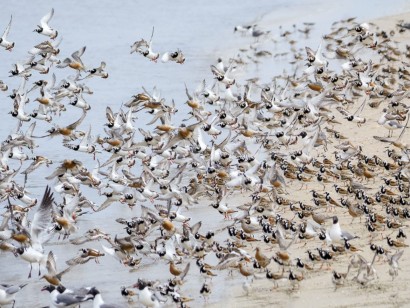
Cape May Migration Tour
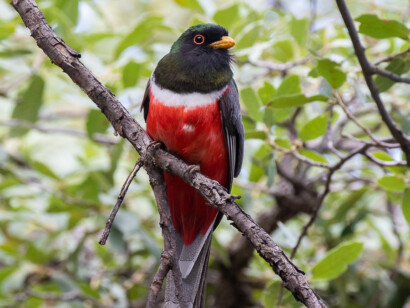
Arizona in Winter
- Conservation
- In the media
- Birding blog
- How to book
- Booking FAQs
- Plan your trip
- Land Tour FAQs
- Insurance FAQ
WHERE WE GO
- Mexico & Central America
- South America
- Australia & New Zealand

- Terms of Use
- Privacy Policy
Limited time offer: Up To 40% off on tickets
Book Online
Things to do.
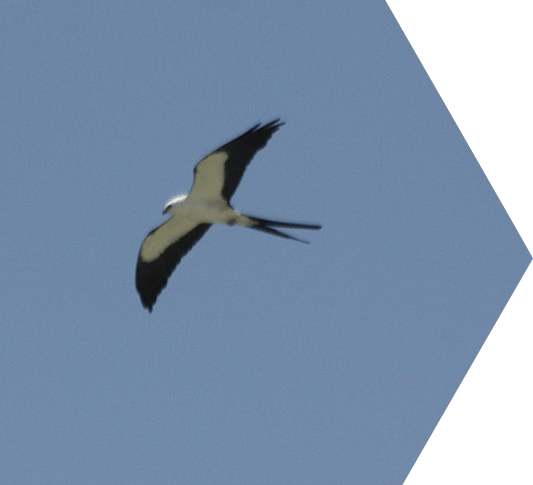
The seven tiny islands of Dry Tortugas are a vital layover for migrating birds traveling between South America and the United States making a staple in the Great Florida Birding Trail . Here you may find a ruby–throated hummingbird, peregrine falcon, yellow billed cuckoo and white-eyed vireo all in one day! Nearly 300 species of birds have been spotted here.
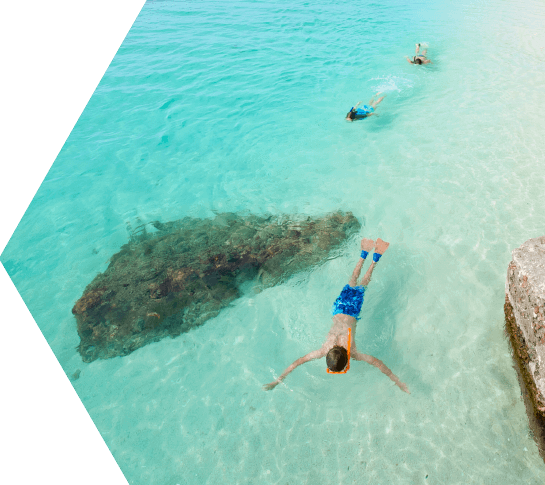
If you love Key West snorkeling , then Dry Tortugas National Park offers some of the best snorkeling and skin diving in North America, just 70 miles from Key West and the Florida Keys. The shallow waters (5-15 feet) make snorkeling at the Dry Tortugas fun for everyone.
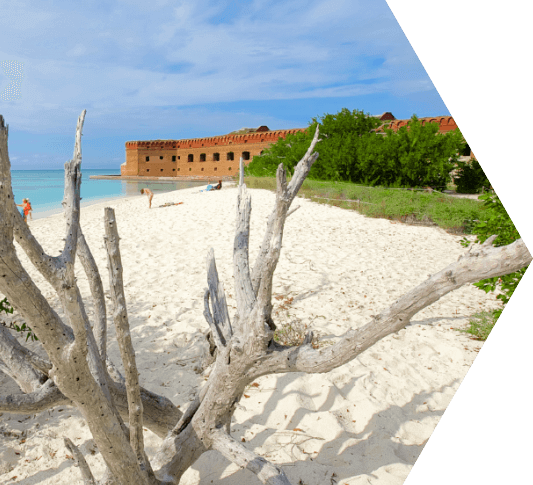
Camping in the Dry Tortugas National Park is definitely an experience of a lifetime! Imagine sleeping under the stars, on an island 70 miles from civilization, with the warm tropical breezes blowing through palm trees and the rhythmic sound of the ocean waves playing in the background. Camping is limited so make your reservations now.

Once you arrive at the Dry Tortugas, there are picnic tables where you can place your personal gear and towels. There are a limited number of picnic tables available outside Fort Jefferson, so you may have to share with other visitors.
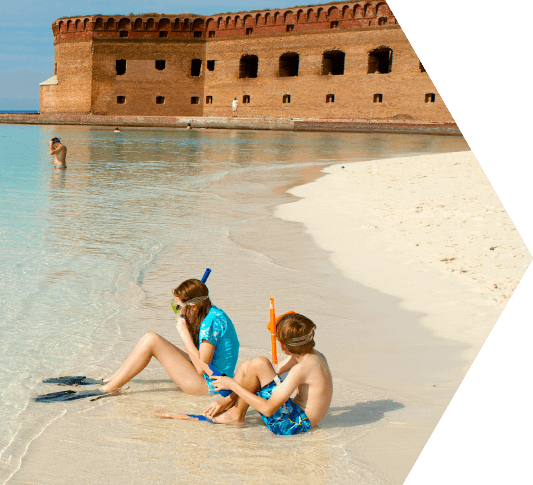
No Key West trip is complete without visiting the best beach in the Florida Keys: Fort Jefferson Dry Tortugas National Park, located just 70 miles west of Key West. Whether swimming, sun bathing or just plain strolling, you will enjoy the crystal blue waters, swaying palm trees and soft, powdery sand of this island paradise.
888-875-9453
[email protected]
TRIP REPORT: DRY TORTUGAS 2022 Seabirds & Spring Migration
" * " indicates required fields
TRIP LEADERS
Sorry, we couldn't find any posts. Please try a different search.
PRIVATE TOUR OPTION
This tour is available as a private trip for any size group. The tour cost will vary with the number of people and any custom requests.
- Tour Name * If not already completed, please enter the tour name above.
- Your Name * First Last
- How many people? *
- In what month(s) would you like to travel? *
- Questions or requests *
- Yes, please add me to your email list!
TESTIMONIALS
If you have been on this tour, please be the first to leave a review!
After and absence of 2 years it was wonderful to get back to the Dry Tortugas. Departing Key West we had calm seas and pleasant weather along with excellent views of Bridled Terns sitting on jetsam; Pomarine Jaegers, including one that kept catching up to our boat; Sandwich and Roseate Terns resting on a shoal marker, as well as Atlantic Bottle-nosed Dolphins and many Flying Fish in the Gulf Stream.
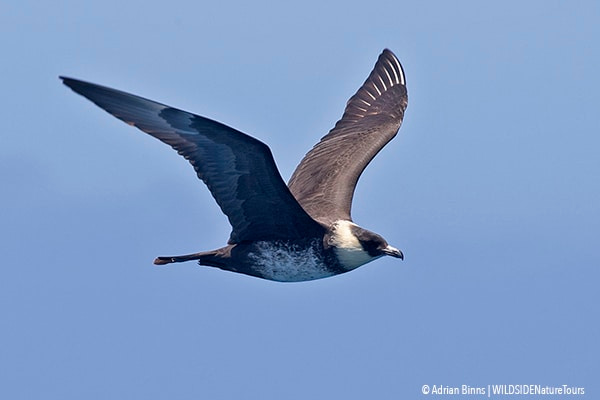
Pomarine Jaeger
Once within the Dry Tortugas National Park boundary we slowed down at Hospital Key (one of the seven keys that make up the Dry Tortugas) to watch about a hundred Masked Boobies including some with chicks resting on the small coral strip. A few Brown Boobies were amongst them which was the first time that I had seen them on that key.
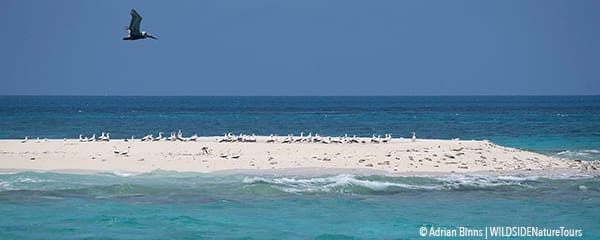
Masked Boobies on Hospital Key
Arriving at Garden Key, we had the remainder of that afternoon and all day the next day to bird the grounds in and around historic Fort Jefferson. We enjoyed wonderful views of hundreds of Brown Noddies perched on the north coaling docks. Amongst them we found the Black Noddy that everyone was keen to see! Nearby on Bush Key we could see Sooty Terns nesting on the ground and Brown Noddies on nests in the bushes, and enjoyed the spectacle of them swirling around the island. A dingy ride towards Long Key allowed for close viewing of the Magnificent Frigatebird colony with many males displaying their red ballon gorget.
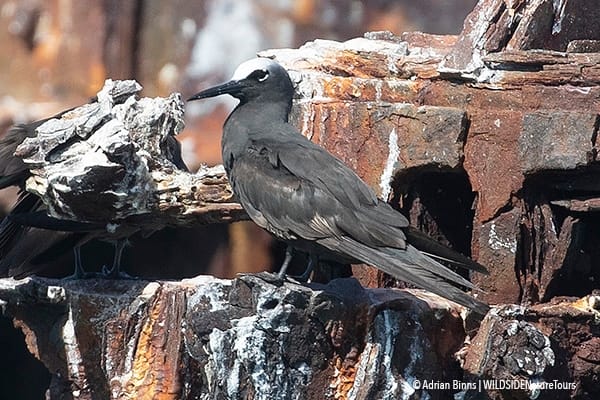
Black Noddy
Though April is peak time for passerine migration, it really depends on fronts from the north or west to have a chance of a good fallout. With steady winds out of the east during our visit we had 9 warbler species, including Northern Parula, Palm, Common Yellowthroat, Blackpoll all of whom made frequent visits to the fountain – the only source of freshwater on the island for them!
Northern Parula
Other passerines included Catbirds, Yellow-billed Cuckoo, several Gray Kingbirds and Black-whiskered Vireo, the latter two Caribbean species that return each spring to breed in Southern Florida. We also had, a good showing of falcons – Merlin, American Kestrel and Peregrine, that could be seen patrolling the parade grounds and pursuing migrants.
Gray Kingbird
The return journey to Key West tends to quieter bird wise as we take more of an inland route, however we did get good views of Brown Boobies, some perched on the buoys and markers as we exited the park, and others foraging out at sea.
Brown Booby
Trip Gallery
Florida Nature Tours
- Dave Goodwin
- David Hartgrove
- Katrina Knight
- Gallus Quigley
- David Simpson
- Birding Tours
- Registration
- Testimonials
- Blasts from the Past
Welcome to Florida Nature Tours
The best tour at the best price.
Florida Nature Tours specializes in birding tours to the Dry Tortugas, Florida & the Caribbean. We also create customized tours to these areas and elsewhere in North and Central America and the Caribbean for any size group interested in birding, photography or history. Our services also include private guiding and companion birding throughout the world.
What makes us different?
Our guides – they have the most Florida experience Value – we give you more – just look at our itineraries and our prices Fuel surcharge – if the price of fuel goes up we take the hit not you!
Hurricane Irma wreaked havoc with the Lower Florida Keys and my Dry Tortugas tours in 2018 and 2019. Now COVID 19 has wiped out our 2020 schedule as well as private guiding for the foreseeable future. We have hopes for 2021, so get back to us and stay safe!
Nancy - Georgetown, DE
Isaac Sanchez - Austin, TX
Mike Todd - McKenzie, TN
Office: 407-680-4780 Cell: 407-376-6967
- Search for:
- No categories
- Entries feed
- Comments feed
- WordPress.org

National Park
Wildlife Watching in South Florida’s National Parks
South Florida’s national parks are a haven for wildlife enthusiasts, offering diverse ecosystems teeming with a wide variety of species. From the unique habitats of the Everglades to the vibrant coral reefs of Biscayne, these parks provide unparalleled opportunities to observe wildlife in their natural environments. Whether you’re an avid bird watcher, a marine life enthusiast, or simply a nature lover, South Florida’s national parks offer something for everyone.
In this guide, we will explore some of the best wildlife watching opportunities in South Florida’s national parks. We’ll take you through the rich biodiversity of the Everglades, the underwater wonders of Biscayne, and the coastal beauty of Dry Tortugas. Additionally, we’ll highlight practical tips and essential information to help you plan your trip, ensuring you have the best wildlife watching experience possible. And for those interested in eco-friendly adventures , we’ll dive into the exciting boat tours in Key West, offering a chance to see dolphins and other marine life while promoting sustainable tourism.
Everglades National Park
Everglades National Park is one of the most unique ecosystems in the world, offering a vast, subtropical wilderness that is home to an incredible array of wildlife. Spanning over 1.5 million acres, the Everglades provide habitats for numerous species of birds, mammals, reptiles, and amphibians.
Bird Watching: The Everglades is a bird watcher’s paradise. Over 360 species of birds have been recorded in the park, making it one of the top birding destinations in North America. Some of the most iconic birds you can spot include the Roseate Spoonbill, Great Blue Heron, and the endangered Snail Kite. The Anhinga Trail and Paurotis Pond are popular spots for bird watching, offering excellent vantage points to see a variety of wading birds and waterfowl.
Alligators and Crocodiles: The Everglades is the only place in the world where alligators and crocodiles coexist. The American Alligator is commonly seen basking along the banks of canals and sloughs, while the less common American Crocodile is found in the coastal areas of the park. Shark Valley and the Royal Palm area are great places to observe these fascinating reptiles in their natural habitat.
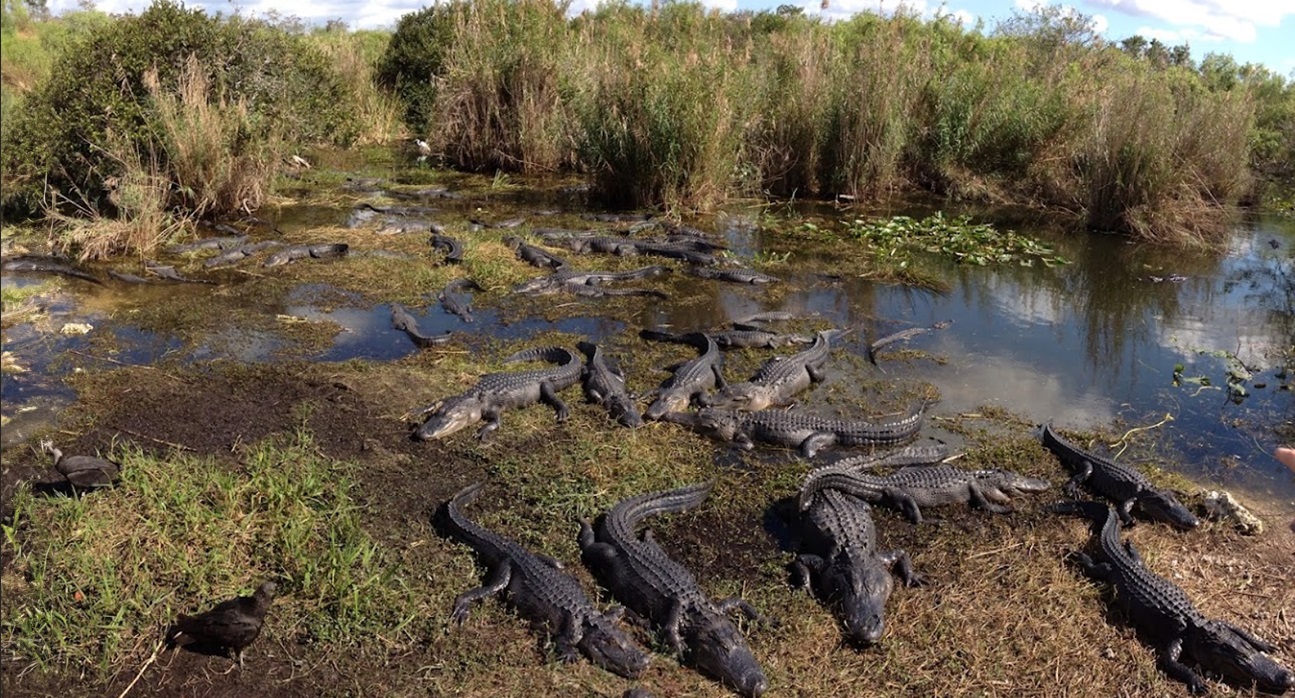
Alligators in Everglades National Park (image: Antonio Perez Coss)
Manatees and Dolphins: The park’s waterways are also home to the gentle West Indian Manatee and playful Bottlenose Dolphins. Manatees can often be seen in the warmer waters of the park’s rivers and estuaries, especially during the winter months. Dolphins are frequently spotted in Florida Bay, where they hunt for fish and interact with each other.
Practical Tips: To maximize your wildlife watching experience in the Everglades, consider taking a guided tour. Park rangers and local guides offer a wealth of knowledge about the park’s ecosystems and can help you spot elusive species. Early morning and late afternoon are the best times for wildlife viewing, as animals are most active during these periods. Be sure to bring binoculars, a camera, and plenty of water to stay hydrated in the humid climate.
Biscayne National Park
Biscayne National Park protects a rare combination of aquamarine waters, emerald islands, and coral reefs teeming with marine life. Covering 172,000 acres, the park is 95% water, making it a paradise for snorkeling, diving, and boating enthusiasts.
Coral Reefs and Marine Life: The coral reefs of Biscayne are home to a vibrant array of marine species, including colorful fish, sea turtles, and rays. Snorkeling and diving are the best ways to explore these underwater ecosystems. The Maritime Heritage Trail offers a unique snorkeling experience, where you can explore shipwrecks and reefs brimming with marine life. Look out for the elusive Spotted Eagle Ray, the Green Sea Turtle, and schools of Blue Tang and Parrotfish.
Bird Watching: Biscayne is also a haven for bird watchers. The park’s islands and mangrove forests provide important nesting and feeding grounds for numerous bird species. The Sandspur Island and Elliott Key are excellent spots to see wading birds, shorebirds, and migratory species. Look for the striking White Ibis, the majestic Osprey, and the elusive Mangrove Cuckoo.
Practical Tips: To fully appreciate the marine life of Biscayne, consider joining a guided snorkeling or diving tour. These tours often include all necessary equipment and provide expert guidance on the best spots to see wildlife. If you prefer to stay dry, glass-bottom boat tours offer a fantastic way to view the underwater world without getting wet. Be sure to bring sunscreen, a hat, and plenty of water to stay protected and hydrated in the sunny, tropical climate.
Dry Tortugas National Park
Dry Tortugas National Park is a remote paradise located 70 miles west of Key West. Accessible only by boat or seaplane, this park is famous for its crystal-clear waters, pristine coral reefs, and historic Fort Jefferson. The park’s isolation makes it a haven for a wide variety of wildlife.
Marine Life: The waters surrounding Dry Tortugas are teeming with marine life. Snorkelers and divers can explore vibrant coral reefs that are home to an array of fish, sea turtles, and rays. The Windjammer Wreck , located in the park, is a popular snorkeling spot where you can see the remains of a 19th-century shipwreck surrounded by marine life. Look for the Hawksbill Sea Turtle, the vibrant Queen Angelfish, and schools of Yellowtail Snapper.
Bird Watching: Dry Tortugas is a critical nesting site for several bird species, including the Sooty Tern and Brown Noddy. The park is also a key stopover for migratory birds traveling along the Atlantic Flyway. Bird watchers can enjoy observing a variety of species, including the Magnificent Frigatebird, Masked Booby, and the elusive Black Noddy. Garden Key and Bush Key are prime bird watching locations, especially during the spring and fall migration seasons.
Practical Tips: Given its remote location, planning a trip to Dry Tortugas requires some preparation. The park is accessible by ferry, seaplane, or private boat. Consider booking a guided tour to make the most of your visit. These tours often include snorkeling equipment and provide insights into the park’s natural and historical features. Bring plenty of water, snacks, and sun protection, as facilities are limited on the island.
Exploring the Nature and Wildlife of Key West with Boat Tours
Key West, located at the southernmost point in the continental United States, is a tropical paradise known for its stunning landscapes, vibrant coral reefs, and rich biodiversity. The area is not only a haven for tourists seeking sun and sea but also a gateway to some of the most unique and ecologically significant national parks in South Florida. Key West’s proximity to places like Dry Tortugas National Park and the Florida Keys National Marine Sanctuary makes it an ideal destination for nature lovers and wildlife enthusiasts.
Key West’s surrounding waters are home to an array of marine life, including dolphins, sea turtles, and countless species of tropical fish. The lush mangrove forests and serene coastal areas also provide habitats for various bird species, creating a perfect environment for wildlife watching. The crystal-clear waters and well-preserved ecosystems make it a prime location for activities such as snorkeling, kayaking, and dolphin watching.
Key West boat tours , particularly eco-friendly ones, are an excellent way to explore the natural beauty and wildlife of Key West. These tours offer a unique perspective of the area’s marine and coastal ecosystems, allowing visitors to access remote locations that are often teeming with wildlife. Eco-friendly boat tours emphasize sustainable practices, ensuring that the natural habitats and the species that live there are protected for future generations. Eco-friendly boat tours focus on minimizing their environmental impact by using energy-efficient vessels, adhering to strict wildlife viewing guidelines, and promoting conservation efforts.
By choosing eco-friendly boat tours, visitors not only enjoy a memorable and educational experience but also contribute to the conservation of Key West’s precious ecosystems. These tours help raise awareness about the importance of environmental stewardship and support local conservation efforts, ensuring that the natural beauty and biodiversity of Key West remain intact for future visitors to enjoy.
Wrapping Up Your Wildlife Watching Adventure
South Florida’s national parks offer an incredible array of wildlife watching opportunities that cater to all interests and skill levels. From the vast wetlands of the Everglades to the vibrant coral reefs of Biscayne and the remote beauty of Dry Tortugas, these parks provide unique habitats that are home to an astonishing variety of species.
Whether you’re an experienced birder, a marine life enthusiast, or a family looking for a fun and educational outing, South Florida’s national parks have something for everyone. The parks’ commitment to conservation and sustainable tourism ensures that these natural wonders will continue to thrive for generations to come.
As you plan your wildlife watching adventure, be sure to research and prepare adequately. Respect the natural environment, follow park guidelines, and consider joining guided tours to enhance your experience. For more information and resources on planning your trip, visit the National Park Service website and other reputable sources.
Sharing is caring!
Related Posts:
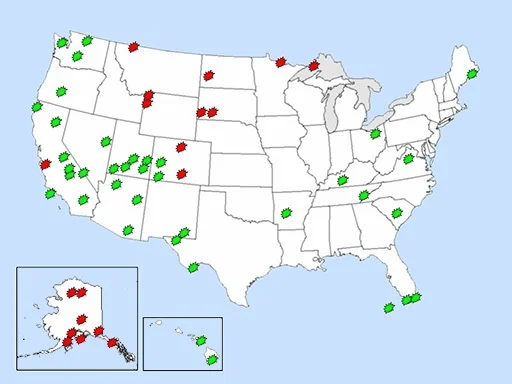
Published by admin
View all posts by admin
Leave a Reply Cancel reply
Your email address will not be published. Required fields are marked *
Save my name, email, and website in this browser for the next time I comment.

Sport Fishing TV Explorations: Dry Tortugas (Part 1)

the Memorial Tournament presented by Workday: Main Feed + Justin Thomas Group (Third Round)

Squeeze Play Presented by Capital One

the Memorial Tournament presented by Workday: Lowry & Homa Marquee Groups (Third Round)

the Memorial Tournament presented by Workday: Harman & Burns Featured Groups (Third Round)

the Memorial Tournament presented by Workday: Featured Holes #4, #12, #15 & #16 (Third Round)
#8 Florida State vs. UConn (Game 2) (NCAA Baseball Championship)
#1 tennessee vs. evansville (game 2) (ncaa baseball championship), yale vs. harvard (heavyweight), tenfifteen fc vs. the concafa sc (round of 16), 2024 wsl championship tour: surf city el salvador pro (surf day #3), nc state vs. #4 north carolina (championship) (acc men's tournament), auburn football a-day, #1 texas vs. #2 oklahoma (wcws finals game 2), the climb: lsu gymnastics, tcu vs. texas, sportscenter, latest clips, kahleah copper calls game with last-second triple for mercury, teoscar hernandez's 2-run double lifts dodgers past yankees in 11, 'goodnight' unc's vance honeycutt walks off wvu, oneil cruz continues to mash with a 114.2 mph solo homer, caitlin clark ties career high with 30 points in fever win, mcafee's concafa sc keeps $1 million dream alive with late winner, eddie hall lands powerbomb, vicious one-punch ko in 2v1 mma fight, alcaraz finishes off sinner to reach french open final, stephen a. isn't confident dan hurley will make the lakers better, stephen a: kyrie 'didn't seem ready' in game 1 vs. celtics, chiefs' bj thompson awake and responsive after cardiac event, otl: nil opportunities for lgbtqia+ athletes, royals overcome 8-run deficit for walk-off win, enrique hernández mishandles ball, makes error during in-game interview, gleyber torres muffs routine pop-up after ball bounces out, mcdavid proud to represent edmonton in the stanley cup final, florida state goes back-to-back in the first inning, how did the series odds shift after celtics' dominant game 1, why stephen a. thinks game 1 loss was a bad game and sign for mavs, rory's stellar shot from the fairway bunker sets up birdie, alan hahn: mavs looked rattled in game 1, celtics dominant as they take game 1 of the nba finals, windhorst lauds jaylen brown for 'perfect performance' in finals opener, porzingis on boston crowd: 'i was getting goose bumps', jaylen brown hammers down huge jam between defenders, jason kidd addresses mavs in locker room following game 1 loss, jj redick: mavs have a 'math problem' with the celtics, myers: dallas 'wasn't prepared' for porzingis' brilliance, luka: mavs must improve 3-point defense to beat celtics, kristaps porzingis emphatically denies josh green at the rim.

IMAGES
VIDEO
COMMENTS
The Dry Tortugas is one of those "must visit" places for every birder! Wildside Nature Tours offers a fantastic experience, with comfortable living quarters on the boat and delicious, freshly prepared food each day. Adrian Binns and Chris Brown are exceptional guides. True professionals - they made sure that all eyes connected with every ...
Bird Watching. From their discovery in 1513 by Ponce de Leon, through the visit of naturalist John James Audubon in 1832, to the present, the Dry Tortugas have been known for their amazing richness in migrating land birds and vast seabird colonies. Imagine, 100,000 Sooty Terns all in one place, all at one time.
The seven tiny islands of Dry Tortugas are a vital layover for migrating birds traveling between South America and the United States making a staple in the Great Florida Birding Trail. Here you may find a ruby-throated hummingbird, peregrine falcon, yellow billed cuckoo and white-eyed vireo all in one day! Over 300 species of birds have been ...
Wildside Nature Tours is an authorized permittee of the Dry Tortugas National Park. Watch our Florida Birding Webinars! Wetland Wonders of Wakodahatchee, Dry Tortugas: Seabirds & Spring Migration . 13. Shares. 13 ... Since 1993, Wildside has offered birding tours and photo workshops that adhere to strong ethical standards. We believe in leaving ...
The Dry Tortugas is a major birding destination in the United States, and a must-see experience for every birder. Located just 70 miles west of Key West, Florida, the cluster of 7 small coral islands host thousands of nesting tropical seabirds - a spectacle found nowhere else in the country.
Cruise in spacious comfort to Fort Jefferson aboard the Official Dry Tortugas National Park Ferry - the Yankee Freedom. A high-speed catamaran, our vessel transports guests 70 miles from Key West to the Park. UNFORGETTABLE FLORIDA KEYS SNORKELING. ONLY 70 MILES FROM KEY WEST, BUT OUT OF THIS WORLD. Visit our Museum at the Key West Historic Seaport.
Tour Manager: Sara Pike. Call 1-866-547-9868 (US or Canada) or (01) 520-320-9868 or click here to email. * Tour invoices paid by check carry a 4% discount. Details here . This tour is limited to 7 participants with one leader. WINGS Birding Tours to Florida: The South, the Keys and the Dry Tortugas - Itinerary.
People flock to the Dry Tortugas island chain for the absolute best snorkeling in Florida. But what many are not aware of is that the Dry Tortugasbird watching you can do out in the Dry Tortugas is equally amazing. No tours have yet to advertise the fascinating bird watching that can be done out here, but bird and nature enthusiasts from all over the world know the unique bird-watching ...
Another option to the daily ferry and seaplane tours is to select one of many tour operators who hold permits with Dry Tortugas National Park to provide services for visitors. There are a variety of tour operators providing trips for fishing, diving, snorkeling, and wildlife viewing. ... Birding Tours with FIELD GUIDES: 512-532-2813: Wildside ...
The South Florida and Dry Tortugas tour is always a success, and this year was no exception. We benefited from excellent weather, productive birding, and even a few scarcities. Starting on the Gulf Coast, the Fort Myers area hosted pinewood specialties including Red-cockaded Woodpecker, Bachman's Sparrow, and Brown-headed Nuthatch while ...
Almost 70 miles (113 km) west of Key West lies the remote Dry Tortugas National Park, only accessible by boat or seaplane. Arriving to Dry Tortugas National Park is half of the adventure! See below to view our current park concessionaires and permitted tour guides to help you plan your visit. Yankee Freedom Ferry. Photo courtesy of Yankee Freedom.
WINGS Birding Tours to Florida: The South, the Keys and the Dry Tortugas - Tour Information. WINGS is a worldwide birding tour company based in Tucson, Arizona. Skip to navigation, or go to main content. ... Motion sickness: The trip to the Dry Tortugas can on occasion be bouncy; there are several remedies available and you may wish to ...
The Dry Tortugas that Audubon and Agassiz witnessed weren't the same collection of islands visitors visit today, though. In 1832, Audubon described the famous Sooties and Noddies of Dry Tortugas nesting on an island called "Bird Key." A century later, Bird Key washed away, forcing the terns to seek refuge on other islands. Since the keys ...
The Florida keys and the Dry Tortugas can be excellent migratory destinations for birds coming back from the Caribbean and Central America. When the conditions are ideal, there can even be a chance of seeing fallout in these areas. Here is a breakdown of our tour itinerary. 4/19- Arrive at the Fort Lauderdale airport no later than 1pm.
The most common types of bird watching binoculars for viewing birds at Dry Tortugas National Park is the 8×21 binoculars and 10×42 binoculars. Bird Watching Academy & Camp sells really nice 8×21 binoculars and 10×42 binoculars. You can view and purchase them here.
Tour Price Includes. All accommodation (Good, comfortable) All breakfasts and lunches. Ground transportation (15-passenger vans) One EET guide with 4 - 8 participants, 2 guides with 9 - 12 participants in 2 vehicles. Full-day boat ride to Dry Tortugas. All park, conservation and entrance fees.
Day Trips. Itinerary; What to Bring; Included w/ Trip; Onboard Services; Trip Details; Cruise in spacious comfort to Fort Jefferson in the Dry Tortugas National Park aboard the Yankee Freedom, a high-speed ocean-going catamaran specifically designed for carrying passengers safely across the 70 miles of open water from Key West to the Park.The Yankee Freedom is 110' long and 30.6' wide, a ...
Whether swimming, sun bathing or just plain strolling, you will enjoy the crystal blue waters, swaying palm trees and soft, powdery sand of this island paradise. Learn more. Learn about all the different activities and things to do while visiting the Dry Tortugas National Park, just 70 miles from Key West, Florida.
Once within the Dry Tortugas National Park boundary we slowed down at Hospital Key (one of the seven keys that make up the Dry Tortugas) to watch about a hundred Masked Boobies including some with chicks resting on the small coral strip. ... Since 1993, Wildside has offered birding tours and photo workshops that adhere to strong ethical ...
Florida Nature Tours specializes in birding tours to the Dry Tortugas, Florida & the Caribbean. ... Hurricane Irma wreaked havoc with the Lower Florida Keys and my Dry Tortugas tours in 2018 and 2019. Now COVID 19 has wiped out our 2020 schedule as well as private guiding for the foreseeable future. We have hopes for 2021, so get back to us and ...
WINGS Birding Tours to Florida: The South, the Keys and the Dry Tortugas - Tour Information. WINGS is a worldwide birding tour company based in Tucson, Arizona. Skip to navigation , or go to main content.
Escape to the secluded islands and tropical beaches off the coast of Key West on this guided, full-day adventure to historic Dry Tortugas National Park. History buffs and outdoor enthusiasts alike will love this unique voyage, where getting there is half the fun on board the Yankee Freedom III, a luxurious, state-of-the-art catamaran. Enjoy snorkeling (equipment provided) in the crystal blue ...
Garden Key and Bush Key are prime bird watching locations, especially during the spring and fall migration seasons. Practical Tips: Given its remote location, planning a trip to Dry Tortugas requires some preparation. The park is accessible by ferry, seaplane, or private boat. Consider booking a guided tour to make the most of your visit.
Watch the Sport Fishing TV Explorations: Dry Tortugas (Part 1) live stream from ESPN2 on Watch ESPN. First streamed on Saturday, June 1, 2024.
WINGS Birding Tours to Florida: The South, the Keys and the Dry Tortugas - Photo Slideshow. WINGS is a worldwide birding tour company based in Tucson, Arizona. Skip to navigation , or go to main content.